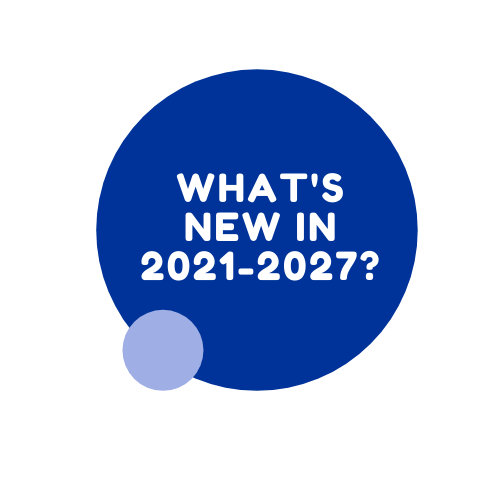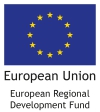What’s new for Central Baltic in 2021-2027?
Tuesday, June 8, 2021 - 14:57
The programming period 2021-2027 is almost ready to be kicked off. Although we are already in the year 2021 the regulations for this period haven’t yet been approved. That also means that the programme documents cannot be finalised yet. Nevertheless, the programming work for Central Baltic has been actively ongoing and we’re ready to move ahead as soon as we technically can. 

At this stage we can already give some indications of how the next programme will look and what changes you can expect to the current period.
Will remain: focus and result-orientation
We will keep and even strengthen our result-orientation. We will also focus the programme further. If we in the previous period had 11 specific objectives, we now have 7 - they’ll just be called programme objectives.
The focusing comes from our conviction that we must use money wisely. We have less than 120 million euros to use over almost ten years and for the benefit of 27 regions with a total of 10.8 million inhabitants. If we want to achieve any real impact, we have to target our funds. That is what our stakeholders have done in their programming meetings and the seminars we have held in the past year.
Result-orientation for a potential applicant means that you have to carefully read our programme documents to understand which seven objectives we have picked. For each programme objective you will find a description as well as output and result indicators. We will fund projects that help us reach the objective and the defined indicators. Again, we do this so that we can create real impact in the period 2021-2027.
Will remain: an ambition to simplify
Our focus on results is shown also so that we strive to cut all unnecessary bureaucracy and instead focus on what really matters. Coming to the period 2014-2020 we went through our procedures and documents and cut all requirements that weren’t absolutely needed. We will do the same for the new period and hope that you will notice that our processes and work are even more streamlined.
Will be new: an increase in the use of SCO’s
Our biggest effort in simplifications in the period 2021-2027 will be a wide use of the so-called simplified cost options (SCO’s). Simplified Cost Options mean that instead of a project paying costs and sending to us invoices on every euro spent, calculations on suitable flat rates, unit costs or lump sums have been made in advance. The project then reports according to these predefined amounts.
A good example of a flat rate was the one for office and administration costs, already used in 2014-2020. In that case the project reports staff costs and 15% of the staff costs is provided to compensate for the office and administration costs. A simple calculation, done automatically by the monitoring system, replaces sending in possibly hundreds of invoices, split inside the organisation, copied and marked and saved, to cover costs like rent, cleaning, electricity, phone bills and internet.
Unit costs and lump sums essentially mean that once a certain activity has taken place (for example, an hour of staff worked or an event organised) you evidence the activity and get a fixed sum to cover the costs.
The benefits of simplified cost options are many. They are predictable and allow for good planning in advance. They are simple to use, meaning that it is unlikely that projects will face cuts by controllers or auditors. They involve a dramatic reduction in technical reporting, leading to considerable time-saving in reporting and allowing to allocate staff resources to reaching results.
The challenges of simplified cost options relate mostly to shifting to a new mindset. As reporting won’t be based on real costs, you might in some cases be overcompensated or undercompensated by a particular SCO. Certainly your bookkeeping will never match. These issues are good to be aware of from the beginning.
We strongly believe that the benefits will outweigh any initial challenges there may be. We’ve made calculations on the suitability of the different options and only pick methods that match the historic data from our projects. The benefits bring monetary benefits but also benefits for which a concrete value cannot be given. Our projects have been very happy with the simplified cost options we had in 2014-2020 and have been asking for more to be used, which is now happening.
Will be evolved: e-monitoring system
If you have applied in Central Baltic in the past, you know our eMS system. For the period 2021-2027, let me introduce its sibling: Jems. Jems is worked out by the same team that developed eMS and taking into account all the lessons learned in the eMS work. However, the eMS code and solutions needed a fresh touch and therefore Jems has been coded from scratch.
Jems is being developed by using the agile methodology, meaning that it will continuously be complemented and improved. For now, the application module of Jems is ready and just waiting for approval of the programme.
Will remain: cross-border cooperation
And with this we can close the circle. In early July we should have a ready programme document, showing how we will cooperate with our neighbours to solve challenges and needs in our border region.
We welcome you to read the draft and reflect on whether you have the same matching needs as well as jurisdiction and competence to work on the topic. If you do, we welcome you to find relevant partners from across the region and to start developing your project ideas.
Our team will remain service-oriented. We urge everyone to approach us for consultations as of August and to work with us, improving our common Central Baltic region also in the period 2021-2027.
Author: Merike Niitepõld, Head of Managing Authority
Author: Merike Niitepõld, Head of Managing Authority


